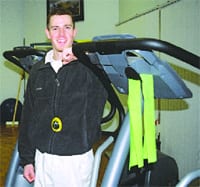Making A New Pitch Medical Recruiting Requires Creativity In An Age Of Staff Shortages
There was a time when hospitals could fill positions almost solely through classified advertisements in local newspapers.
Those days, however, are long gone.
The newspaper help-wanted ads are still used, to be sure. But now, they are supplemented with Internet advertising, open houses, incentive programs, and a wide range of other efforts to attract health care professionals to open jobs.
Indeed, at a time when the nursing profession still faces a nationwide shortage of workers, and specialty fields such as radiology, cardiology, and gastroenterology have been hit hard by inadequate staff, hospitals must become more creative in their recruiting efforts — and often more generous in their compensation packages — to compete with the many career options available to doctors, nurses, and other professionals.
As officials from several area hospitals told The Healthcare News, the ability to recruit skilled professionals is a necessary skill by itself — and one that involves far more resourcefulness than simply placing an ad.
Combating the Crunch
With hospitals competing so fervently for available nurses, financial incentives must come into play, especially to fill difficult shifts, said Claudia Roberts, a registered nurse and nurse recruiter at Baystate Medical Center.
For instance, Baystate nurses who commit to working all but four weekends per year are rewarded with not one but two shift differentials on top of their base pay. And nurses who are part of flex teams, trained to float among units to augment the core staffing, are paid a differential for that as well.
Furthermore, Baystate has instituted a loan repayment program for nursing students. Those who commit to working a certain number of hours per year as RNs after graduation have their student loans gradually decreased as part of their pay.
Mary E. Kelleher, vice president of Human Resources at Holyoke Hospital, said nurse staffing is most challenging in critical care settings, such as the intensive care unit. Therefore, the hospital is trying to get people who have gone into other facets of nursing to return to the acute-care setting by providing a 12-week training program to familiarize them with the needs of acute care.
“We have a lot of nurses who have been medical-surgical nurses for a number of years and have aspired to work in the critical-care setting but have not felt comfortable learning by just standing beside another staff person,” Kelleher said. “With this program that provides them with an intensive training program, they are able to enter into that area of nursing.”
Still, with the average age of nurses nationwide creeping over 40, hospitals need to do more than reassign nurses to areas of critical need; they must also attract younger nurses who will fill needs for years to come.
“Even with the national nursing shortage, we’ve had some success in keeping our staffing levels where we think they should be,” said Jeffrey Whorton, director of Human Resources at Noble Hospital.
To meet those needs — particularly in the critical care areas — Noble uses traditional sources such as newspaper ads, but like many hospitals, it also conducts open houses a couple of times a year, not just for nursing but for other fields of staffing concern, such as radiology, laboratory, and respiratory therapy.
“We get a mix of students and experienced people looking to change jobs or just experiment with opportunities,” Whorton said. Noble also sends representatives to college job fairs, speaking with students who are close to graduation and ready to choose jobs. “I don’t think we’ve gone to one where we haven’t hired someone,” he said.


Comments are closed.